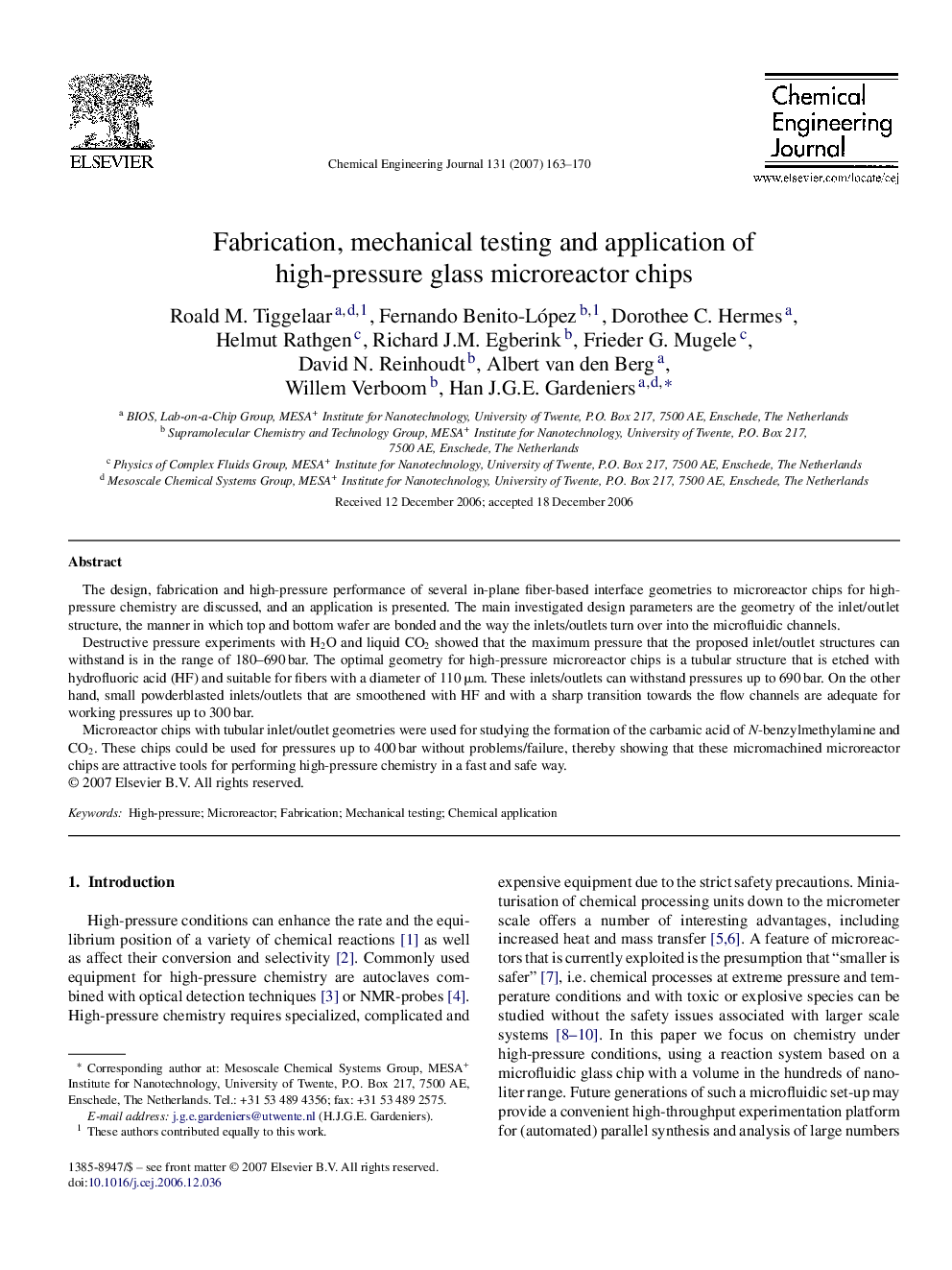| کد مقاله | کد نشریه | سال انتشار | مقاله انگلیسی | نسخه تمام متن |
|---|---|---|---|---|
| 153944 | 456545 | 2007 | 8 صفحه PDF | دانلود رایگان |

The design, fabrication and high-pressure performance of several in-plane fiber-based interface geometries to microreactor chips for high-pressure chemistry are discussed, and an application is presented. The main investigated design parameters are the geometry of the inlet/outlet structure, the manner in which top and bottom wafer are bonded and the way the inlets/outlets turn over into the microfluidic channels.Destructive pressure experiments with H2O and liquid CO2 showed that the maximum pressure that the proposed inlet/outlet structures can withstand is in the range of 180–690 bar. The optimal geometry for high-pressure microreactor chips is a tubular structure that is etched with hydrofluoric acid (HF) and suitable for fibers with a diameter of 110 μm. These inlets/outlets can withstand pressures up to 690 bar. On the other hand, small powderblasted inlets/outlets that are smoothened with HF and with a sharp transition towards the flow channels are adequate for working pressures up to 300 bar.Microreactor chips with tubular inlet/outlet geometries were used for studying the formation of the carbamic acid of N-benzylmethylamine and CO2. These chips could be used for pressures up to 400 bar without problems/failure, thereby showing that these micromachined microreactor chips are attractive tools for performing high-pressure chemistry in a fast and safe way.
Journal: Chemical Engineering Journal - Volume 131, Issues 1–3, 1 July 2007, Pages 163–170